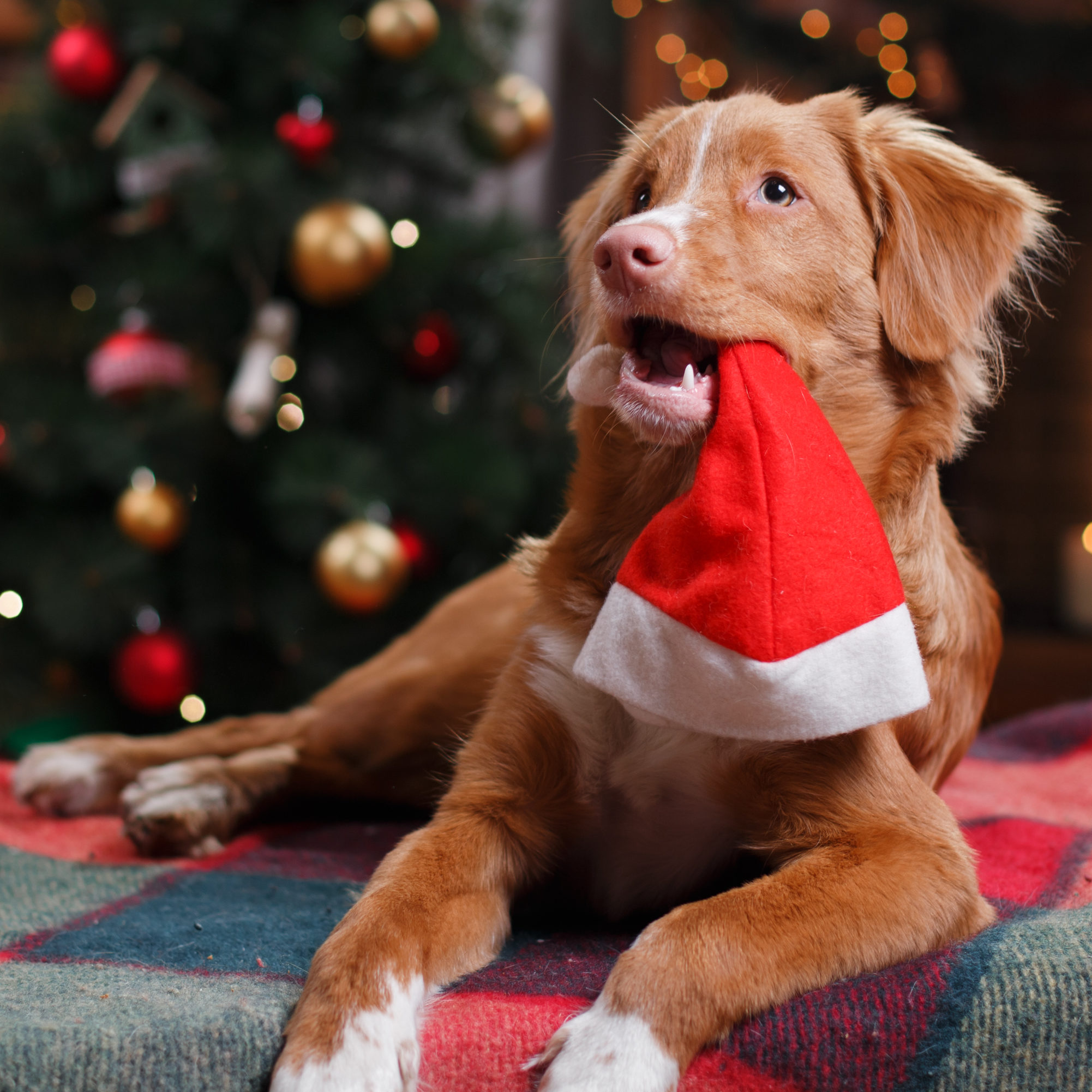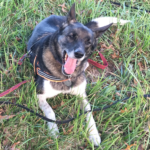Holiday Hazards and Hints
It’s the middle of the winter holiday season, and guests are coming to your home. Fido’s freaking out, and the children are in chase.
What to do?!
Let’s look at some holiday challenges, and ways to address them.
JUMPING ON GUESTS
The front door!
Exciting things happen at the front door, and it’s often more than our dogs can handle. Strangers invading… hugs and high-pitched greetings… it’s confusing and arousing, and for some pups, also scary.
Create a happy place away from the front door such as another room, a crate, or a fenced or penned play area that your dog loves. Give him something to calm and engage him such as a stuffed Kong or brain game until arrivals are over. Once guests are settled bring Pogo out to meet them.
Reward your dog for keeping four paws on the floor before he begins to jump. Keep up a high rate of reinforcement (once a second is not too much at first) while he learns that 4-on-the-floor pays off better than jumping does.
General excitement
Anytime you think Pogo might demonstrate his jumping skills, reward him before he begins. The behavior that is reinforced—4-on-the-floor—becomes more likely.
CHILL OUT ZONES
Our dogs need relaxing “down time” as much as we humans do. If children are among your holiday visitors this becomes even more important. Giving your dog alone time and a safe place when visitors come will help keep everybody calm and safe.
Create a “no touch” zone: a place that your dog can relax without worrying about being petted, poked, prodded, or pursued! You can use baby gates or exercise pens (xpens) to give Hildy a space of her own, or put her in a room where she’s comfortable, and make a rule that only a designated adult may disturb her there.
PLAYING BY THE RULES
Kids and dogs can be a great combination … or a disaster! Often kids (and adults) interact with dogs in ways that make our pups feel afraid, and in need of defending themselves. Hugging, putting your face in your dog’s face, or reaching toward a dog can make a dog feel cornered, and could lead to a growl, snap, or bite. Help your dog out by playing in ways that give them choices about coming to you, rather than forcing your attentions on them. One example is Hide-and-Seek, where one person hides and calls the dog’s name, rewarding with treats when Hunter finds his quarry. As well as leading to good play, it’s a great way to help him enjoy coming when called.
STOP THE SURFING!
What could be better than holiday food? The sights, scents, and sounds of festive cooking are nearly irresistible for a dog who can reach the counter, and who could blame a dog for hoping something might fall from the table when you sit down to dine?
Creating a place for Chomper to settle, instead of surfing your counters or gazing woefully at your dinner guests, helps her to know what you’d like her to do before she tries behaviors you’d rather she not do. I like simply placing a mat where it’s convenient and comfortable for her to hang out, such as just outside or inside of the kitchen when you’re cooking, or the dining room when you’re gathered around the table. Toss tasty treats on the mat to get her started, and drop a treat every now and again while she remains there. At first you’ll need to drop treats frequently, but you’ll be able to add a little time between treats once she learns that she gets food only when resting on the mat.
FOOD HAZARDS
As much as we love our raisin stuffing, or Macadamia nut cookies, either could spell disaster for your dog. While many foods are good for our dogs and for us both, many holiday delicacies are toxic for our canine best friends. Artist Lili Chin has created a fun poster that calls out a number of these festive hazards, including avocado, onions and garlic, grapes, raisins, currants, walnuts, macadamia nuts, chocolate, caffeine, mushrooms, and xylitol. She also draws attention to medication hazards, and the consequences of too much fat or dairy.
VICIOUS VEGETATION
Holiday decorations present their own hazards, from fallen Mistletoe and Holly sprigs, to Poinsettias and Amaryllis. Preservatives, fertilizer, plant food, and even aspirin in the water of cut trees can be toxic. Decorations (or trees themselves) when ingested can damage the digestive system or cause blockages, and electric lights have the potential to shock or burn.
You can prevent access to these hazards by blocking off rooms or areas of rooms with baby gates and xpens when you are not actively monitoring your dog’s activity.
BRAIN GAMES
One great way to keep our dogs happy is to give them dog-friendly challenges and jobs to do. We love brain games and food puzzles because they engage our dogs’ sense of smell, enlist their foraging instincts, and provide opportunities for them to problem-solve. Mental stimulation can calm and tire our dogs as much as physical exercise. Both are an important part of a healthy canine lifestyle, but when family commitments are likely to reduce the physical exercise your dog gets, an increase in mental exercise can help bridge the gap.
Have a terrific time with your family, both furry and furless!
For more information and training advice:
Jumping:
“Don’t Jump on Grandma” Joyful Dog Handout
Playing by the Rules:
“How Not to Greet A Dog” poster
Stop the Surfing:
Excellent video of a boy teaching a Vizsla to remain on a mat, rather than counter-surfing.
Food Hazards:
ASPCA poison control hotline
“World’s Most Dangerous Foods” poster by Lili Chin
Indoor Games and Brain Games:
“Fun, It’s What’s for Breakfast” Joyful Dog Blog
Victoria Stillwell 10 indoor games




